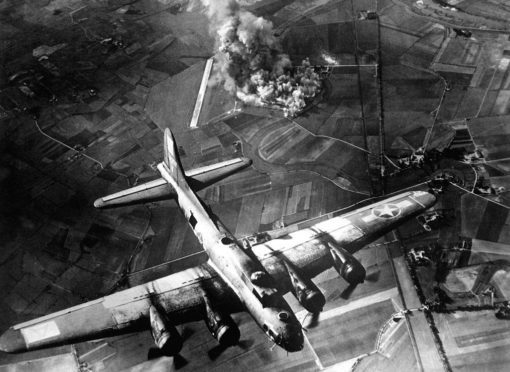How do we remember the Great War? The last Scottish veteran, Alfred Anderson of the 5th Battalion the Black Watch died in 2005. The “last fighting Tommy” Harry Patch died in 2009. Florence Green of the Women’s Royal Air Force died in 2012. We will soon sadly lose the last veterans of the Second World War.
My own memories are vague ones of Private Roderick McLennan of the 4th Battalion the Seaforth Highlanders – my great-grandfather. He wore his kilt with pride at Hogmanay, perhaps the only time he spoke about the war. His memory of being with 2nd Lieutenant Ewart Alan Mackintosh on the day that his esteemed officer fell was clearly one which still brought sadness.
Mackintosh was well respected by his troops and fell at Cambrai in 1917. He was a war poet and his words live on, especially in his poem In No Man’s Land where he shared the time when he could not bring himself to kill a German soldier in the ditch next to him. He only knew the soldier was there because he was coughing and sneezing with a cold.
Peter Jackson’s They Shall Not Grow Old film has brought colour to the old, grainy, black and white, broken images of the 1914-1918 war.
“He could not bring himself to kill a German soldier in the ditch next to him.”
The next job is identifying the people in the film reel captured on the Western Front. Perhaps the most striking part of his film was the common humanity between men from different sides.
German Army first aiders, taken prisoner by the British, now pitching in to help wounded Allied soldiers. Here at the University of Aberdeen, my good colleague Professor Thomas Weber has found that the Christmas Day truce was not a one-off phenomenon.
Such acts of humanity and connection continued well beyond 1914 as the conflict moved into an even more brutal phase.
As we move beyond 2018, and the 100th anniversary of the end of the Great War, there is a risk that the First World War becomes the new Crimean War – overlooked and forgotten. And so, how do we remember?
Crowds will hopefully still stand in respectful and reverent silence at 11am for a hundred years more. That silence almost never happened. In May 1919 Australian soldier journalist Edward George Honey wrote to the London Evening News. As the first anniversary of the ending of the Great War approached, all that was planned were veterans’ celebratory dinners.
Foster – Honey’s pseudonym – appealed for five minutes’ silence. The idea was not taken up at the time. However, South African Sir Percy Fitzpatrick communicated the idea to the king.
This eventually led to George V calling for two minutes of silence, arranged only days before November 11 1919.
One hundred years of silences are soon to pass. We might now ask, what have we learned and how have we progressed? The First World War was supposed to be the war to end all wars. Clearly this has not been the case. War continued unabated in the 20th century. Today, we are seeing the world around us break up and tensions continue on many fronts.
Last year I proposed that the afternoon/evening of future Armistice Sundays could include musicians from across the globe striking up in unison, playing the international language, recognised and revered by all. Music to the ears and a symbol of our ability to work together.
The respectful silence must remain but united voices need to be heard if we really want to end war and live in peaceful coexistence.
Since my proposal, an amazing cooperative community has come together to collaborate in promoting cooperation, peace and reconciliation. Composer Thoren Ferguson has scored a powerful new piece, Armistice, to be played at 4pm Central European Time and 3pm GMT on November 11. The music was scored on Steve Burnett’s wonderful crafted envoy of peace – the Wilfred Owen violin. That violin was crafted from a tree on the grounds of Craiglockhart War Hospital, where the war poet convalesced in 1917 after suffering shell shock. In recent years, the violin has been endorsed by Unicef goodwill ambassador Maxin Vengerov as “an envoy for peace and reconciliation through music.”
>> Keep up to date with the latest news with The P&J newsletter
Adding to the composition, a global team of talented musicians and composers have supported arrangements for full orchestra, string orchestra, brass band, various ensemble and solo participation. Musicians from across the world have joined a growing Facebook community, who are declaring they will join “iPlay4Peace” – and play this piece of music on November 11 at the arranged time. Together, they will make an international orchestra, playing in a global concert. A concert for peace 100 years after World War One ended.
Musicians are joining from Shetland to London, from as far afield as America, Turkey and Milan. Will you join in this global orchestra?
To find out more see #iPlay4Peace on social media.
Neil McLennan is Senior Lecturer and Director of Leadership Programmes, University of Aberdeen.

